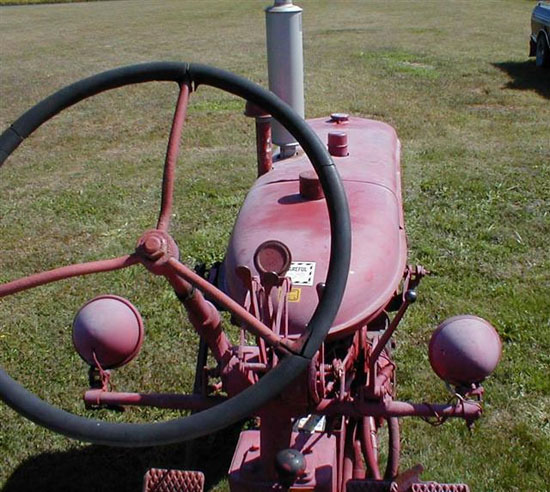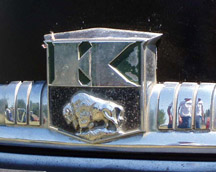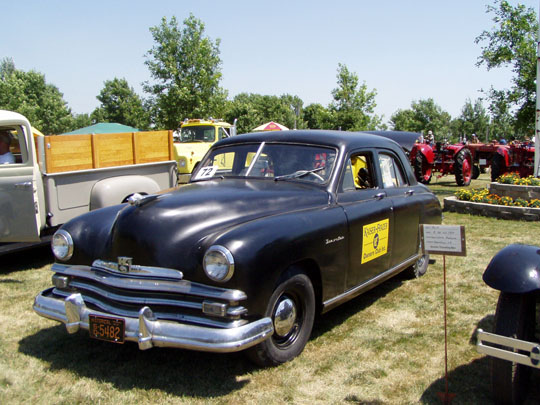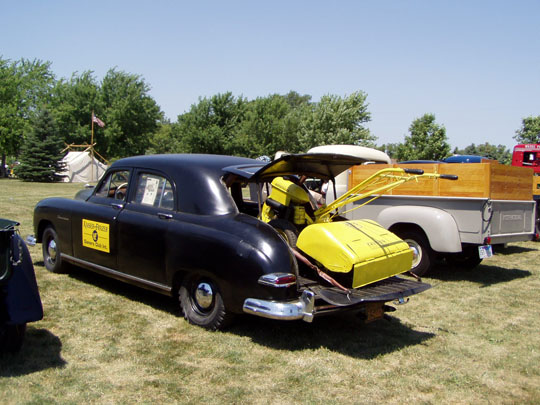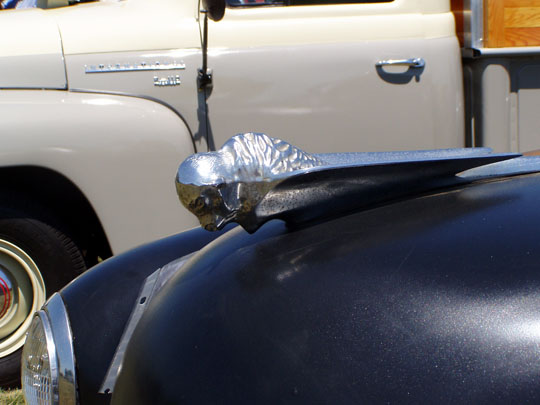I’ve been doing some research trying to find more about my family history… Uncle Runt did some work on the family tree years ago, but went only as far back as his Grandfather (my Great Grandfather), Serrill C. Thornton, born in 1852 in Whitehall, NY. His father — my Great-Great Grandfather — was also named Serrill. He was born in 1807 in either New York or Vermont, and migrated to Sioux County, IA, where he lived many years until he died in 1892. He is buried in Hawarden, IA, and I had the extreme honor of visiting his grave-site on Thanksgiving Day.
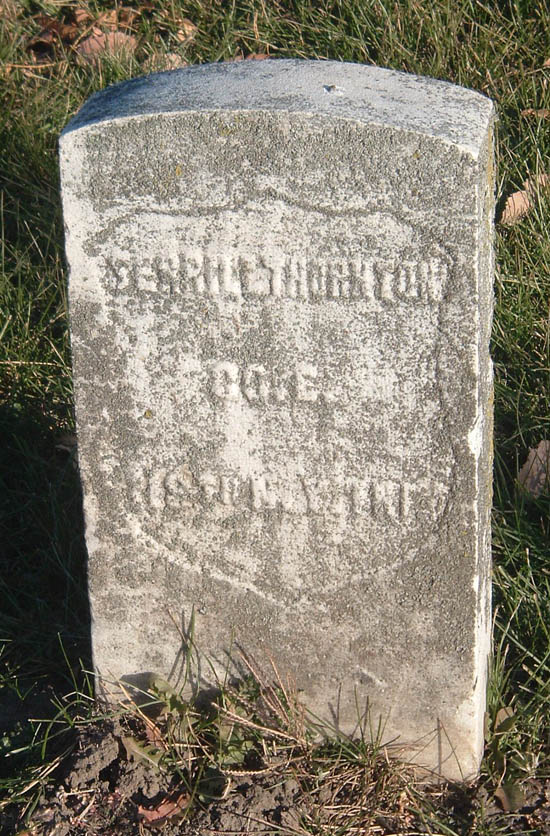
(Click on the images to view the hi-resolution versions.)
His gravestone is very simple, apparently provided by the Federal Government in honor of his service in the Civil War. It bears only his name and the company he fought with, the 19th New York Infantry.
I don’t know much more about him than what is written above. He was a pioneer, a farmer, a husband, and a father. He lived to the age of 86 in hard, hard times. He saw two wives die, and the birth of at least two children. This much I know from the scanty records left behind; but who he really was, I can only guess at and wonder… Was he a man of faith? Did he enjoy the company of his sons? Did he laugh or smile much? What was important to him? I doubt I’ll ever know the answers to those questions unless we bump into each other in eternity.
At the same cemetery, we also found the grave markers for three other Thorntons; one was Serrill’s third wife, Emily C. It’s just a bit spooky that her name and middle initial is the same as my daughter. From what I’ve learned, the two of them were married in 1880; he was 73 and she was 51. Emily’s grave marker is very simple, consisting of a simple cast stone/concrete marker with an engraved metal plate bearing her name and the pertinent dates. That’s it. It’s so small we walked right by it a number of times without realizing that it was even a grave marker. I think thats a sign she didn’t die a wealthy woman.
All that leaves me with even more questions; was Emily widowed before she and Serrill met? Did she have children? What was her maiden name, and where was she from? What was it that made her want to marry an old guy like Serrill? Was she a woman of faith?
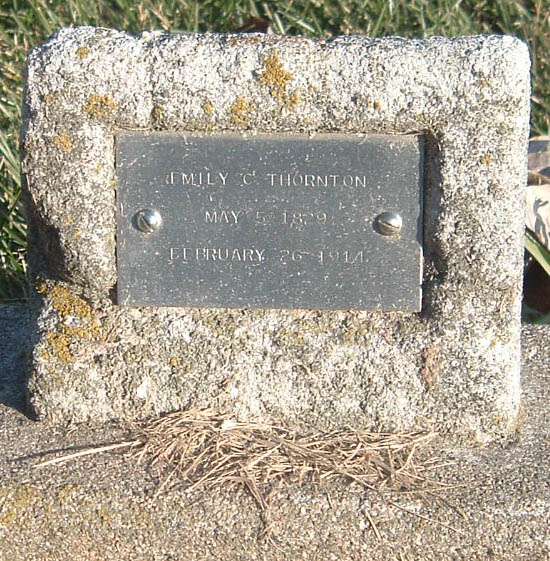
The other marker that we found was for the graves of Fordie and Delia; they were born within a year of each other, and both died before their first birthdays. It’s a little odd that Fordie & Delia were buried in Hawarden, as they were children of Serrill C. and Jennie Thornton. Apparently Serrill C. farmed in the same area as his dad Serrill, and started a family there. Serrill C. & Jennie had six children, oldest of whom was Scott. Then came Arthur, Delia, Ford, Lucy and Orpha. Some of the records list Delia as Ruby Delia Thornton, so it’s interesting that her grave marker reads Delia. Also interesting is that Ford Henry was named that long before Henry Ford became a household name.



I made a map on Google Maps showing the location of the grave-sites. They are near the southwest corner of the cemetery. The cemetery has a directory available to visitors that lists all the graves and their locations — what a great feature! We would’ve been there for hours looking if not for the directory. It’s not perfect; they had the surname for all of them misspelled; “Thorton” again! It also had Serrill listed as “Samuel”, and had two others Thorntons — Gerritt & “Infant” — listed as being in the same section and row as Serrill, Delia & Fordie. But we saw no other markers with Thornton on them, so it could be that those graves are unmarked.
Another interesting thing that I learned about the Hawarden area… The first settlement in Sioux County, Iowa, was named Calliope. I first heard about the town when I ran across some info about the children of Serrill & Jennie, and the birthplace for some was listed as Calliope, IA.
Calliope was founded by a couple of gentlemen who made arrangements with the state for Calliope to be the county seat for Sioux County, and drew a stipend for their work. They set up a courthouse there, and the community started to grow, albeit rather slowly. Not long after, some Dutch immigrants began to settle the area around the train depot near present-day Orange City, IA, and Orange City really started to take off. By the 1890’s, there were several hundred citizens near Orange City, compared to only a couple dozen near Calliope. A dispute arose between the two communities when some of the Orange City Dutchmen decided that it made more sense for the county seat to be in Orange City, but the Calliope officials didn’t think so. The Dutchmen decided to take matters into their own hands and went en-mass on bobsleds to try & convince the others that their way was best. They meant business as they came armed with rifles and revolvers, and came some 80 strong.
The stories aren’t clear what all happened in that confrontation, but the Dutchmen ended up cutting a hole in the wall of the courthouse to haul the 5,000lb safe out, and made off with all of the county papers. In the days that followed, clearer heads prevailed, and the safe & documents were returned to Calliope, and the ordeal was followed by a referendum to decide where the county seat should be located. The population density pretty much decided the question, and the decision was overwhelmingly on the side of Orange City, and that is where the county seat is to this day.
Calliope went the way of many early settlements, disappearing from the maps altogether. When the railroad extended a branch to the area, they were unable to obtain permits to build a depot in Calliope, so it ended up being built a few miles to the south; people began to settle closer to the train station, and that became known as Hawarden. Hawarden eventually grew much larger than Calliope, and Calliope was in the end annexed into the larger town. I can’t help but wonder if some of the hard feelings between Orange City and Calliope led to the railroad’s difficulty in getting permits and the town’s demise.
You can read more about Calliope here and here.








